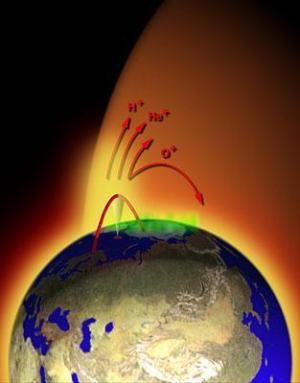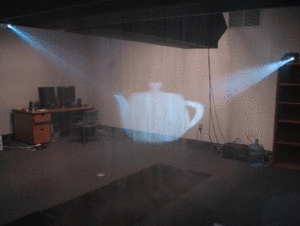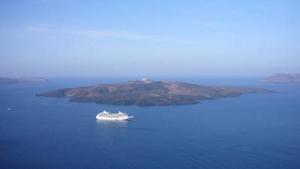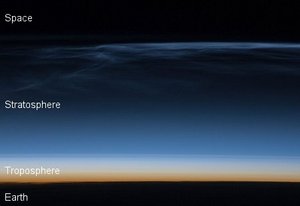Oxygen is constantly leaking out of Earth's atmosphere and into space. Now, ESA's formation-flying quartet of satellites, Cluster, has discovered the physical mechanism that is driving the escape. It turns out that the Earth's own magnetic field is accelerating the oxygen away.

|
| ©NASA/ESA
|
| This artist's impression shows electrically charged oxygen, hydrogen and helium atoms (ions) leaking into space from the Earth atmosphere, over the poles. ESA's Cluster mission discovered that this accelerated escape is driven by changes in direction of the Earth own magnetic field.
|
The new work uses data collected by Cluster from 2001 to 2003. During this time, Cluster amassed information about beams of electrically charged oxygen atoms, known as ions, flowing outwards from the polar regions into space. Cluster also measured the strength and direction of the Earth's magnetic field whenever the beams were present.
Hans Nilsson, Swedish Institute of Space Physics, headed a team of space scientists who analysed the data. They discovered that the oxygen ions were being accelerated by changes in the direction of the magnetic field. "It is a bit like a sling-shot effect," says Nilsson.
Having all four Cluster spacecraft was essential to the analysis because it gave astronomers a way to measure the strength and direction of the magnetic field over a wide area. "Cluster allowed us to measure the gradient of the magnetic field and see how it was changing direction with time," says Nilsson.



